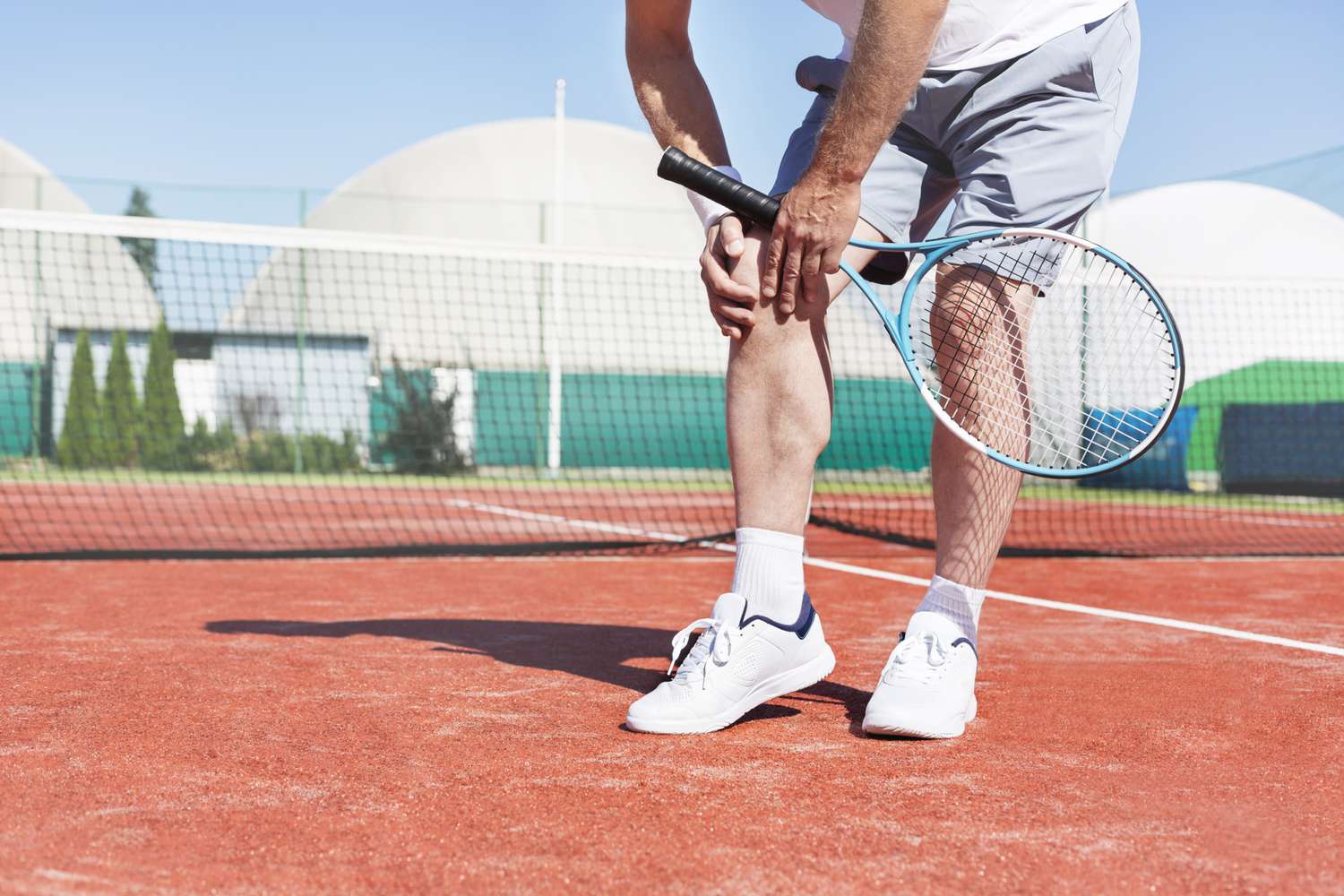 Avid tennis players run the risk of many injuries, tennis knee being one of the most common. All of the constant back-and-forth, quick turns, lunges and other moves to keep the ball in play mean that your knees are constantly being twisted, turned and pounded on.If you play regularly, the strain on your knees can build up and result in injury and long-term damage.
Avid tennis players run the risk of many injuries, tennis knee being one of the most common. All of the constant back-and-forth, quick turns, lunges and other moves to keep the ball in play mean that your knees are constantly being twisted, turned and pounded on.If you play regularly, the strain on your knees can build up and result in injury and long-term damage.
Let’s explore how the knee functions and how you can prevent the pain and recovery from this injury.The knee bone mechanism that allows us to move and bend our legs for walking and running is comprised of the kneecap (patella), thigh (femur), shin (tibia) and head fibula bones.
Knee injuries can arise while playing tennis when the bone, muscles, tendons, cartilages, or nerves in that area are traumatized.Different types of pain determines what part of your knee is injured.
Tennis players also commonly develop an injury called patella tendinitis, this is when the tendons in the knee suffer damage from the repetitive strain caused by jumping, lunging and quick stops associated with tennis.Bursitis is another common tennis injury. This is caused by overexertion.
Running, bending and pushing off can all cause inflammation of the Bursa, a small sack full of lubricating liquid. Another part of the knee mechanism is the meniscus.These small, pieces of cartilage act as cushions between the femur and the tibia. Sudden movement can cause small tears in the cartilage.
The Right Shoes
So how do you keep all the moving parts in good shape? One of the first things any athlete should do is find the correct pair of tennis shoes.The correct shoes for your feet not only feel good but can provide extra support and stability for all of the joints in your legs.
Stretching Helps!
While we can’t always prevent injuries from occurring, we can assist our bodies by taking preventative measures.Stretching exercises for the quadriceps, hamstrings, calves and chins keep muscles loose and flexible. If you do experience pain of any kind the first thing to do is ice! Also elevating your leg assists with swelling and inflammation.Take a break from tennis and exercise in general allowing the knee to heal.
This is very important, if you keep running and pounding a slight injury can easily become a long term, debilitating nightmare.So stop-and if the pain persists see a doctor. Then keep having fun under the sun on the tennis courts!
Education Blog for Personal Trainers Education
By: Joe Antouri
PROPTA / Professional Personal Trainers Association
Worldwide Institute for Fitness & Nutrition for Education and Certification
 Los jugadores de tenis ávidos corren el riesgo de sufrir muchas lesiones, y la rodilla de tenista es una de las más comunes. Las constantes idas y venidas, los giros rápidos, las embestidas y otros movimientos para mantener la pelota en juego implican que las rodillas se retuercen, giran y golpean constantemente.Si juegas con regularidad, la tensión en las rodillas puede acumularse y provocar lesiones y daños a largo plazo. Exploremos cómo funciona la rodilla y cómo puedes prevenir el dolor y recuperarte de esta lesión.
Los jugadores de tenis ávidos corren el riesgo de sufrir muchas lesiones, y la rodilla de tenista es una de las más comunes. Las constantes idas y venidas, los giros rápidos, las embestidas y otros movimientos para mantener la pelota en juego implican que las rodillas se retuercen, giran y golpean constantemente.Si juegas con regularidad, la tensión en las rodillas puede acumularse y provocar lesiones y daños a largo plazo. Exploremos cómo funciona la rodilla y cómo puedes prevenir el dolor y recuperarte de esta lesión.
El mecanismo óseo de la rodilla que nos permite mover y flexionar las piernas para caminar y correr está formado por la rótula (patela), el muslo (fémur), la espinilla (tibia) y la cabeza del peroné. Las lesiones de rodilla pueden surgir al jugar al tenis cuando se traumatizan el hueso, los músculos, los tendones, los cartílagos o los nervios de esa zona.
Los distintos tipos de dolor determinan qué parte de la rodilla está lesionada. Los jugadores de tenis también suelen desarrollar una lesión llamada tendinitis rotuliana, que se produce cuando los tendones de la rodilla sufren daños debido a la tensión repetitiva causada por los saltos, las embestidas y las paradas rápidas asociadas al tenis.
La bursitis es otra lesión frecuente en el tenis. Está causada por un sobreesfuerzo. Correr, agacharse y empujar pueden provocar la inflamación de la bursa, un pequeño saco lleno de líquido lubricante. Otra parte del mecanismo de la rodilla son los meniscos.Estos pequeños trozos de cartílago actúan como amortiguadores entre el fémur y la tibia. Los movimientos bruscos pueden provocar pequeños desgarros en el cartílago.
El calzado adecuado
¿Cómo mantener en buen estado todas las piezas móviles? Una de las primeras cosas que debe hacer cualquier atleta es encontrar el par de zapatillas de tenis adecuado.El calzado adecuado para tus pies no sólo te hará sentir bien, sino que te proporcionará un apoyo y una estabilidad adicionales para todas las articulaciones de las piernas.
Los estiramientos ayudan
Aunque no siempre podemos evitar que se produzcan las lesiones, podemos ayudar a nuestro cuerpo tomando medidas preventivas.Los ejercicios de estiramiento para cuádriceps, isquiotibiales, gemelos y barbillas mantienen los músculos sueltos y flexibles. Si sientes algún tipo de dolor, lo primero que debes hacer es ponerte hielo. También elevar la pierna ayuda a aliviar la hinchazón y la inflamación.Tómate un descanso del tenis y del ejercicio en general para permitir que la rodilla se cure. Esto es muy importante, si sigues corriendo y golpeando una lesión leve puede convertirse fácilmente en una pesadilla debilitante a largo plazo.Así que para, y si el dolor persiste ve al médico. Después, ¡sigue divirtiéndote bajo el sol en las pistas de tenis!
Blog de educación para entrenadores personales Educación
Por: Joe Antouri
PROPTA / Asociación Profesional de Entrenadores Personales
Instituto Mundial de Fitness y Nutrición para la Educación y Certificación

